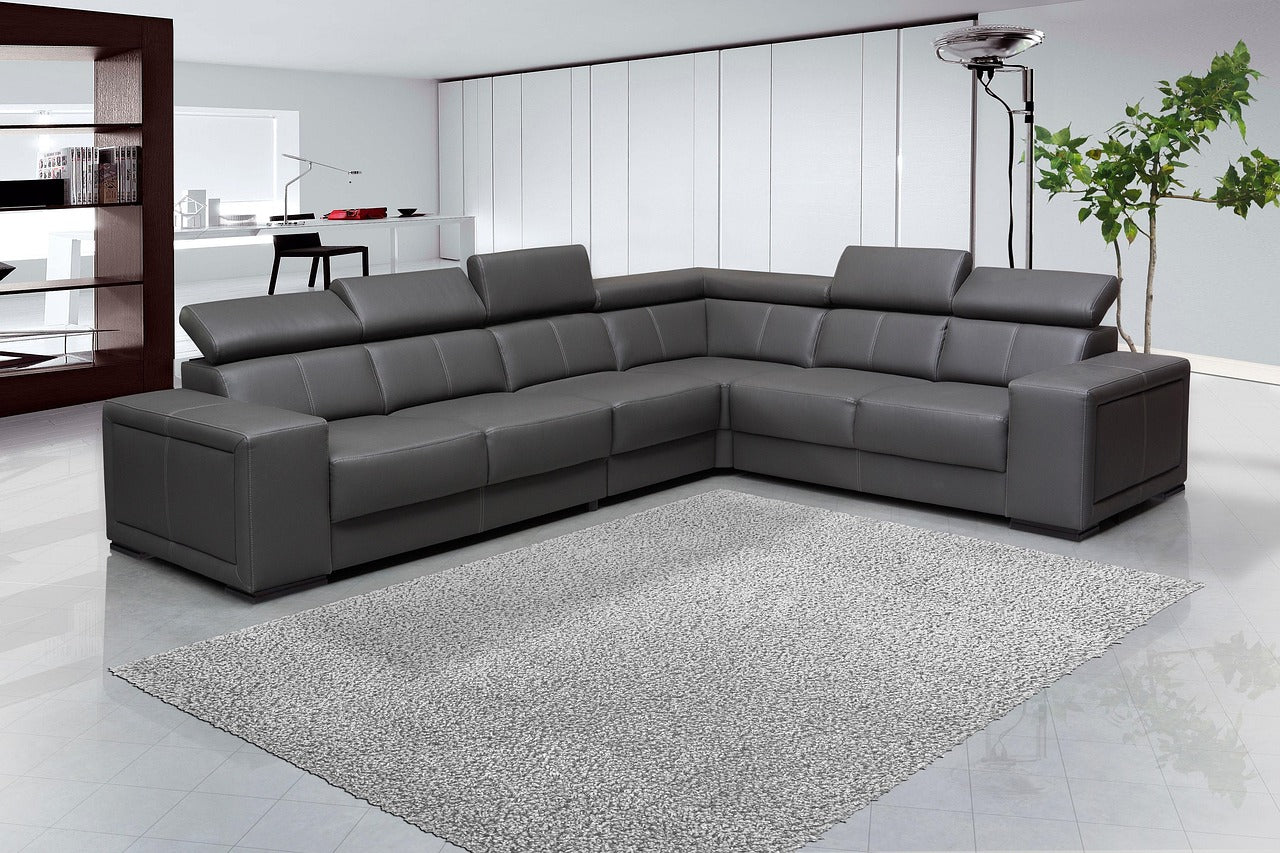Leather furniture adds an element of sophistication, elegance, and durability to any living space. Unlike fabric furniture, leather sofas and chairs require specific care to maintain their luxurious look and feel. Proper maintenance helps prevent cracking, fading, and wear, ensuring that your leather furniture remains an eye-catching centerpiece for years.
Well-maintained leather furniture offers several benefits beyond aesthetics. It is easier to clean than fabric alternatives, resists allergens, and becomes more comfortable over time. However, without the right care, leather can dry out, develop stains, or crack, leading to irreversible damage. To keep leather sofas and chairs looking new, it is essential to understand the different types of leather, establish a routine cleaning schedule, and use the right conditioning techniques.
Understanding Different Types of Leather
Not all leather is created equal, and understanding the type of leather used in your furniture will help determine the best care approach. The three main types of leather used in furniture are:
1. Aniline Leather
Aniline leather is the most natural-looking leather, featuring a soft and luxurious feel. It lacks a protective coating, making it more susceptible to stains, scratches, and fading. This type of leather requires extra care and conditioning to maintain its appearance.
2. Semi-Aniline Leather
Semi-aniline leather has a light protective coating, making it more resistant to spills and wear while retaining a natural appearance. It offers a balance between durability and softness, making it a popular choice for households with children and pets.
3. Pigmented Leather
Pigmented leather is the most durable type, featuring a protective topcoat that enhances resistance to stains and wear. Although it lacks the softness of aniline leather, it is ideal for high-traffic furniture due to its easy maintenance.
Identifying Your Leather Type
To determine which type of leather you have:
-
Check the manufacturer’s label for specific information.
-
Perform a water test: Place a small drop of water on an inconspicuous area. If it absorbs quickly, the leather is likely aniline.
-
Examine the texture: Pigmented leather has a more uniform surface, whereas aniline leather shows natural grain and variations.
Routine Cleaning and Maintenance
Regular cleaning prevents dirt buildup, extends the lifespan of the leather, and maintains its softness. Follow these steps to keep leather sofas and chairs looking pristine:
1. Dust and Vacuum Regularly
-
Use a microfiber cloth to wipe dust off the surface.
-
Vacuum the crevices using a soft brush attachment to remove dirt and debris.
-
Avoid harsh bristles that may scratch the leather.
2. Wipe with a Damp Cloth
-
Use a clean, damp (not wet) cloth to wipe the surface.
-
Avoid excessive water, as it can cause stains or weaken the leather’s fibers.
-
If needed, use a mild soap solution (1 part dish soap to 10 parts water) for gentle cleaning.
3. Choose the Right Cleaning Products
-
Use pH-balanced leather cleaners designed specifically for furniture.
-
Avoid alcohol-based or ammonia-based cleaners, as they can dry out the leather and cause cracks.
-
Test any new product on an inconspicuous spot before applying it to the entire surface.
Deep Cleaning Techniques
Even with routine maintenance, leather furniture requires deep cleaning every few months to remove deep-seated dirt and restore its natural sheen.
1. Homemade Leather Cleaning Solution
For a DIY cleaner:
-
Mix equal parts white vinegar and distilled water.
-
Dampen a microfiber cloth with the solution and wipe the leather gently.
-
Follow with a dry cloth to remove excess moisture.
2. Commercial Leather Cleaners
-
Opt for high-quality leather cleaners that do not contain harsh chemicals.
-
Follow the manufacturer’s instructions and avoid overuse.
3. Removing Stubborn Stains
-
Ink stains: Dab with rubbing alcohol on a cotton swab, then condition the area.
-
Grease stains: Sprinkle baking soda, let it absorb the oil, and wipe away after a few hours.
-
Water stains: Buff gently with a soft cloth to redistribute moisture evenly.
Conditioning and Moisturizing
Leather naturally loses moisture over time, making conditioning essential to prevent drying and cracking.
1. Choosing the Right Leather Conditioner
-
Use high-quality conditioners that nourish and protect the leather.
-
Avoid petroleum-based products that can damage the finish.
2. How to Apply Conditioner
-
Use a clean, soft cloth to apply a small amount of conditioner.
-
Rub in circular motions, allowing the leather to absorb the product.
-
Wipe off excess conditioner and let it dry naturally.
Avoiding Common Hazards
Preventative measures can significantly extend the life of leather furniture.
1. Protecting Against Sun Damage
-
Keep leather sofas and chairs away from direct sunlight.
-
Use curtains or UV-protective window films to reduce exposure.
2. Preventing Spills and Stains
-
Use protective covers or throws for extra protection.
-
Blot spills immediately with a dry cloth; do not rub.
3. Avoiding Sharp Objects
-
Keep pets’ nails trimmed to prevent scratches.
-
Be mindful of keys, belt buckles, or jewelry that may damage the surface.
Professional Care and When to Seek It
Sometimes, professional cleaning or repair is necessary to restore leather furniture.
1. Signs You Need Professional Help
-
Deep cracks or peeling leather.
-
Persistent stains that DIY methods cannot remove.
-
Fading or discoloration.
2. Choosing a Reputable Leather Care Service
-
Look for specialists with experience in leather restoration.
-
Read customer reviews and check service guarantees.
DIY Repair Tips for Minor Damage
For small scratches or scuffs:
-
Use a leather repair kit for touch-ups.
-
Apply a small amount of olive oil or coconut oil to blend scratches.
For deeper cracks:
-
Apply a leather filler and sand it down smoothly before recoloring.
Innovative Products and Tools for Leather Care
The market offers various products to simplify leather maintenance:
-
Leather cleaning wipes for quick touch-ups.
-
Leather protection sprays for extra durability.
-
Specialized color restoration creams for faded areas.
Regular care and maintenance ensure that leather sofas and chairs remain in excellent condition for years. From routine cleaning to conditioning and professional services, each step contributes to preserving the beauty and longevity of leather furniture. Incorporating high-quality leather care products enhances the durability of furniture and provides long-lasting protection.
For those seeking premium leather maintenance solutions, Pecard Leather Care offers expertly formulated products that condition and protect various leather items, ensuring they remain in optimal condition.
FAQs
1. How often should I condition my leather sofa?
Conditioning should be done every 6-12 months, depending on the leather type and climate.
2. Can I use baby wipes to clean my leather furniture?
No, baby wipes contain chemicals that may strip natural oils and damage the leather surface.
3. What should I do immediately after a spill on my leather chair?
Blot the spill immediately with a dry, clean cloth. Avoid rubbing to prevent spreading the stain.
4. Is it safe to use a steam cleaner on my leather couch?
No, steam can strip the leather’s natural oils and cause shrinkage or cracking.
5. How can I tell if my sofa is made of genuine leather or faux leather?
Genuine leather has an uneven texture and absorbs moisture, while faux leather feels smoother and does not absorb water. For top-tier leather care products, Pecard Leather Care offers solutions tailored for cleaning, conditioning, and protecting leather furniture.






